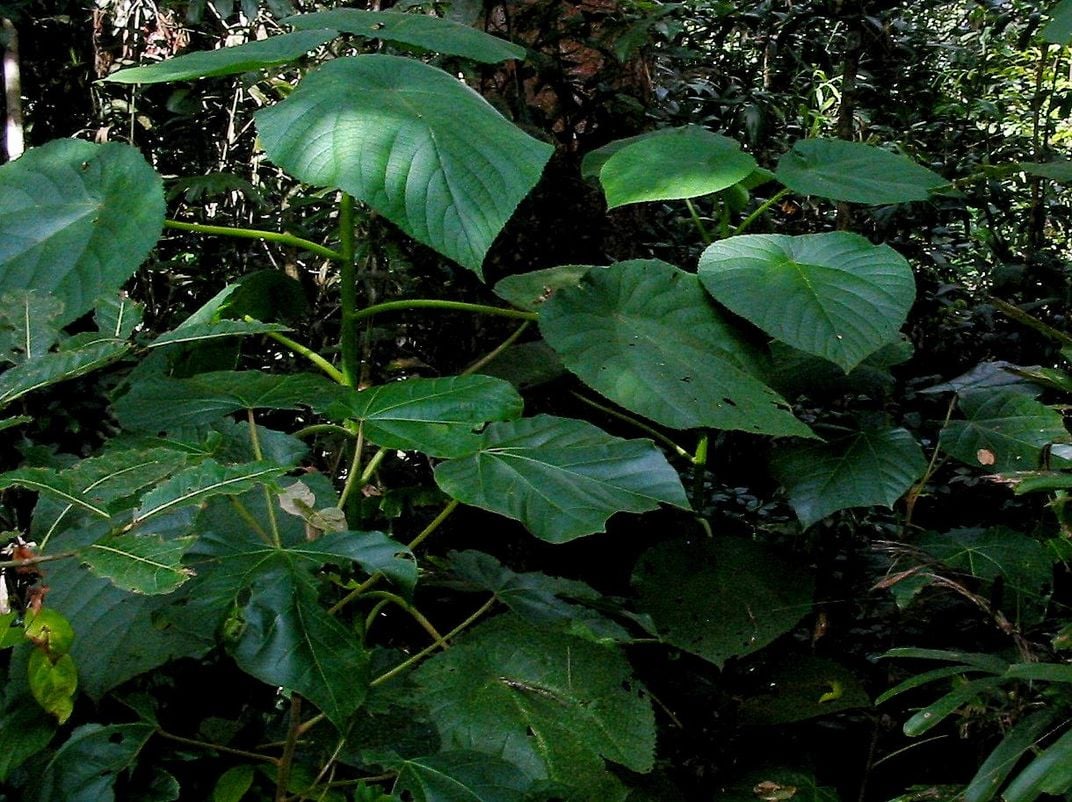How Venomous Australian Stinging Trees Cause So Much Pain
The trees may look fuzzy, but they’re covered in tiny needles that can cause months of pain
/https://tf-cmsv2-smithsonianmag-media.s3.amazonaws.com/filer/cd/cc/cdcc4de7-cf8d-4f3b-9172-ff32d6f744dc/e45amr.jpg)
Dendrocnide plants in Australia’s eastern rainforest have broad, fuzzy-looking leaves. But one touch packs a punch that can leave a person in pain for days, weeks or even months.
Each hair is like a tiny needle that injects venom into its victim, and a study published last week in Science Advances identifies a new class of molecules in the venom that makes the sting so painful. The molecule not only ignites nerve cells to send pain signals, but also sticks around in the body and prevents the signal from turning off.
The pain-causing molecule has a similar shape to chemicals in venoms used by spiders and cone snails, Katherine Wu reports for the New York Times. That particular shape is what makes the chemicals so well-suited to latching on to nerve cells and making them go haywire.
“These are three widely divergent groups of organisms — spiders, cone snails and now these trees — producing a toxin that’s very similar,” University of Nebraska-Lincoln toxin researcher Shabnam Mohammadi, who was not involved in the study, tells the New York Times.
Mohammadi adds that it’s a stunning example of three vastly different species coming up with the same solution to an evolutionary challenge. For predators like spiders and cone snails, causing pain is an effective way to incapacitate prey. For the Dendrocnide plant, it may be a form of defense.

Some animals eat the leaves, but the venomous spines are certainly enough to discourage humans from getting too close. Trails through the rainforest are marked with signs warning hikers to keep their distance from the trees, which can grow to 100 feet tall.
“A casual split-second touch on an arm by a leaf or stem is enough to induce pain for hours or days. In some cases the pain has been reported to last for weeks. A gympie-gympie sting feels like fire at first,” study co-authors Irina Vetter, Edward Kalani Gilding and and Thomas Durek of the University of Queensland write in the Conversation, using the Indigenous Gubbi Gubbi people’s name for the tree. “[The pain] then subsides over hours to a pain reminiscent of having the affected body part caught in a slammed car door. A final stage called allodynia occurs for days after the sting, during which innocuous activities such as taking a shower or scratching the affected skin reignites the pain.”
Vetter explains in a statement that the leaves’ hairs act like hypodermic needles that inject venom into the skin. To study which specific molecule causes pain, scientists used to inject themselves with purified molecules derived from the venom, which is rather ethically questionable, per the New York Times. Instead, the new study used synthetic versions of toxins in the venom injected into mice. When the mice licked and nipped at the injection site, that meant the chemical had caused pain.
The study of the tree’s pain-causing chemicals, dubbed “gympietides” by the researchers, may illuminate treatments for people stung by the trees, Harry Clarke-Ezzidio reports for CNN. It may also contribute to stronger, general pain-relieving treatments.
“So many things induce pain, and so little is known about why,” Harvard University neurobiologist Isaac Chiu, who was not involved in the study, tells the New York Times. He adds that the trees’ gympietides target a part of nerve cells that is “fundamental to mammalian pain. If this reveals something that blocks that, it would be really exciting.”